In the heart of Hanoi’s dynamic Old Quarter, Ta Hien Street emerges as a vibrant nexus weaving the city’s rich historical tapestry with its frenetic modern life. Known as the “Beer Street” of Hanoi, Ta Hien captivates visitors with its pulsating nightlife, cultural heritage, and culinary offerings. Tracing back to its origins in the French colonial era, this street has evolved into a symbol of cultural resilience and adaptation, boasting an eclectic mix of architectural styles and a lively street scene that delights explorers. Whether you’re here for the cultural stories, the local “bia hoi” draft beer, or the street food extravaganza, Ta Hien Street frames the quintessential Hanoi experience.
The History of Ta Hien Street
Ta Hien Street encapsulates the evolution of Hanoi’s social and cultural landscape, initially known as Rue Géraud during the French colonial era. This street was a vibrant hub that catered to Hanoi’s elite, home to the distinguished Quang Lac Theater, and later renamed post-1945 to honor Ta Quang Hien, a significant figure in the Can Vuong movement against French domination. Today, the narrative of Ta Hien reflects a seamless blend of the city’s historical journey, marking its transformation from a silk and tea trading center to the energetic epicenter of modern Hanoi nightlife, forever cherished for its “bia hoi” culture and lively social scene.
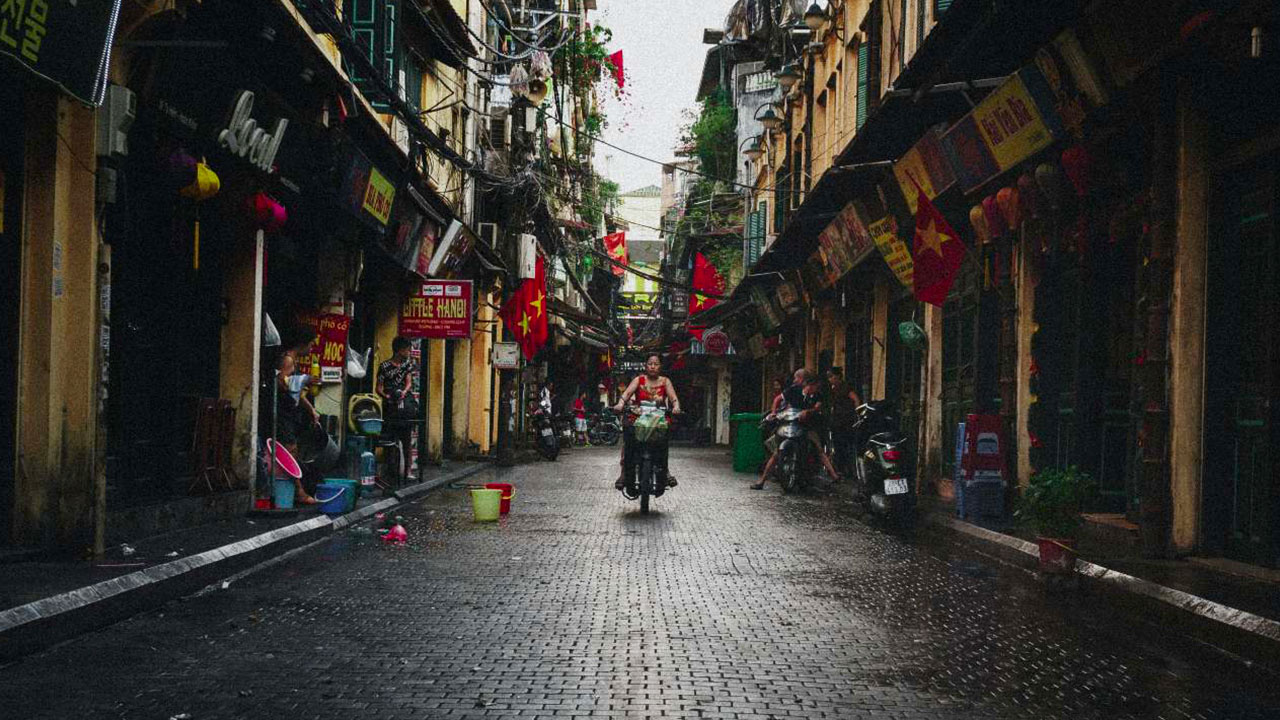
Evolution from Rue Géraud to Ta Hien
Ta Hien Street, nestled in Hanoi’s bustling Old Quarter, represents a journey through time and cultural evolution. Originally christened Rue Géraud under French colonial rule in the late 19th century, it quickly became a fashionable district, appealing to the upper class with its lavish theater, the Quang Lac. This establishment was not just a showcase of cultural offerings but a melting pot where the colonial and indigenous Vietnamese cultures intertwined.
As you step into the vibrant streets of Ta Hien, imagine the past where affluent patrons thronged to the Quang Lac Theater, akin to a prized jewel of Rue Géraud. This venue was pivotal, introducing theatrical marvels that portrayed not only entertainment but also a cultural dialogue. Ta Hien today stands as a symbolic transition from its luxurious roots to a beacon of popular nightlife, showcasing yet another era of social engagement.
- Initial Era:
- Known as Rue Géraud
- French colonial influence
- Home to Quang Lac Theater
- Post-1945 Era:
- Renamed Ta Hien
- Celebration of Vietnamese heritage
- Emergence as a hub for silk and tea
Structural remnants of the French era, like intricate balconies and shuttered windows, are juxtaposed against the vibrant colors of local artisans and eateries today. This unique juxtaposition illustrates an intricate narrative of adaptation, reminiscent of the city’s and its people’s tenacity and vibrant spirit.
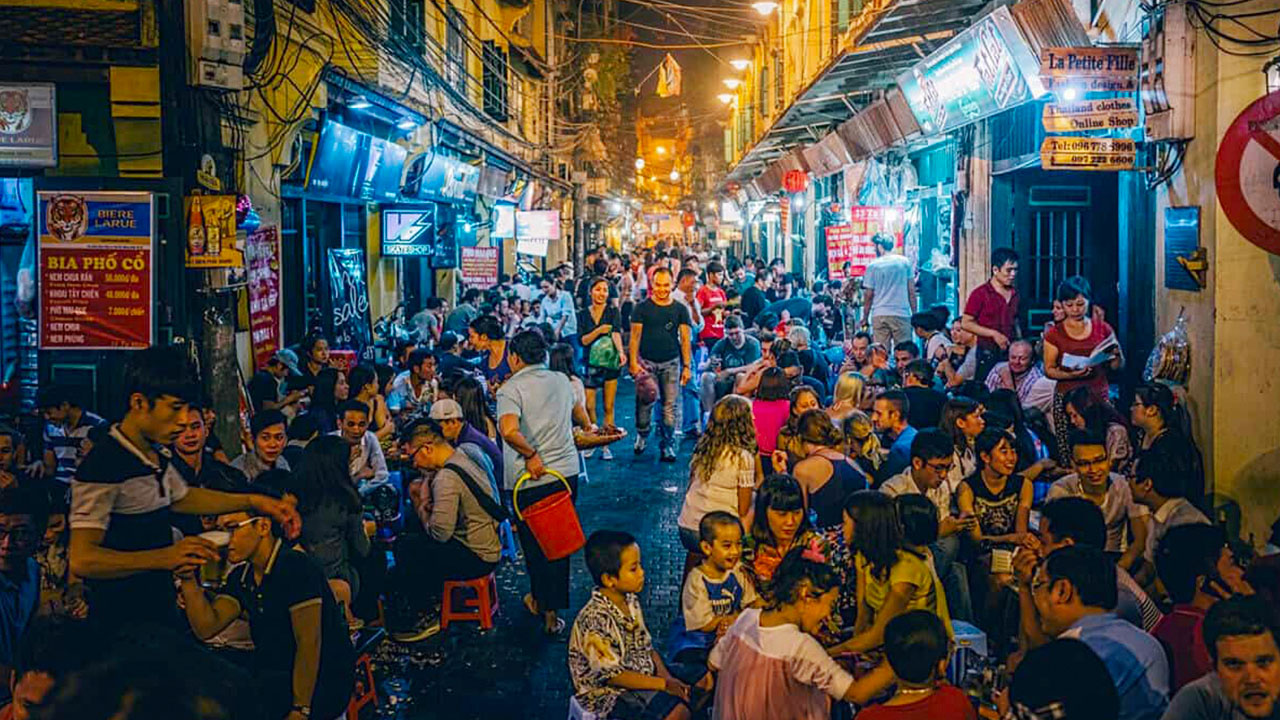
Significance of the Quang Lac Theater
The Quang Lac Theater once stood as a beacon of cultural integration on Ta Hien Street, signifying French colonial influence amalgamating with Vietnamese artistry. The theater, housed in a colonial-style building, became a meeting point for diverse societal strata, both local and foreign. With its ornate architecture and eclectic performances, it mirrored the cultural exchanges that flourished within Hanoi during the early 20th century.
In its heyday, the Quang Lac Theater wasn’t merely a venue for performances. It was a crucible where French artistic influences and Vietnamese traditional narratives coalesced, forging a unique cultural expression. For patrons, attending a show was akin to journeying through a cultural fabric intricately woven by diverse threads of colonial and native traditions. As theater lights shimmered over its elaborate facade, they cast both shadow and light on the complexities of colonial Vietnam.
- Cultural Bridge:
- Showcased Vietnamese operatic arts
- Promoted French dramatic plays
- Hub for colonial and local elites
- Architectural Grandeur:
- Colonial architectural influence
- Decorative windows and balconies
- Grandeur integrated with ethnic motifs
With the Vietnam War and subsequent post-war transformation, the Quang Lac Theater eventually closed its doors as the socio-economic climate shifted. Yet, today, its legacy endures, serving as a cultural beacon resonating within the contemporary nightlife scene. Now reimagined as the 1900 Club Hanoi, the theater’s ambiance lives on infused with vibrant music, it acts as a metaphorical bridge connecting Hanoi’s rich cultural past and its pulsating present.

Transformation in the Post-War Era
In the aftermath of the Vietnam War, Ta Hien Street saw a remarkable transformation, embodying Hanoi’s resilience and adaptive spirit. The post-war era marked a significant shift in both socioeconomic dynamics and cultural expressions, resonating deeply in the fabric of Ta Hien. Once a victim of war, the street gradually revived, blossoming into a vibrant confluence of Hanoi’s cultural past and its progressive future.
The street, bursting with new life and energy in the 1990s, experienced significant economic reforms. These changes rejuvenated Ta Hien, transforming it into the city’s most popular nightlife destination primarily celebrated for its “bia hoi” culture. Locals and tourists alike flocked to experience the freshly brewed beer, served in humble plastic glasses a testament to local ingenuity and camaraderie. The street became synonymous with a newfound optimism, symbolizing social renewal across Vietnam.
- War-Era Impact:
- Decline in cultural activities
- Socioeconomic setbacks
- Loss of public and social spaces
- Post-War Rebirth:
- Economic revitalization in the ’90s
- Emergence of “bia hoi” culture
- Strengthening of social and cultural scenes
Ta Hien’s striking evolution from a post-war desolate space to a dynamic public sphere remains one of the compelling narratives of Hanoi’s broader transformation. From faded colonial edifices to lively open-air beer stalls, its comeback embodies Hanoi’s indefatigable resilience and collective aspiration to celebrate life and cultural identity amidst adversities.
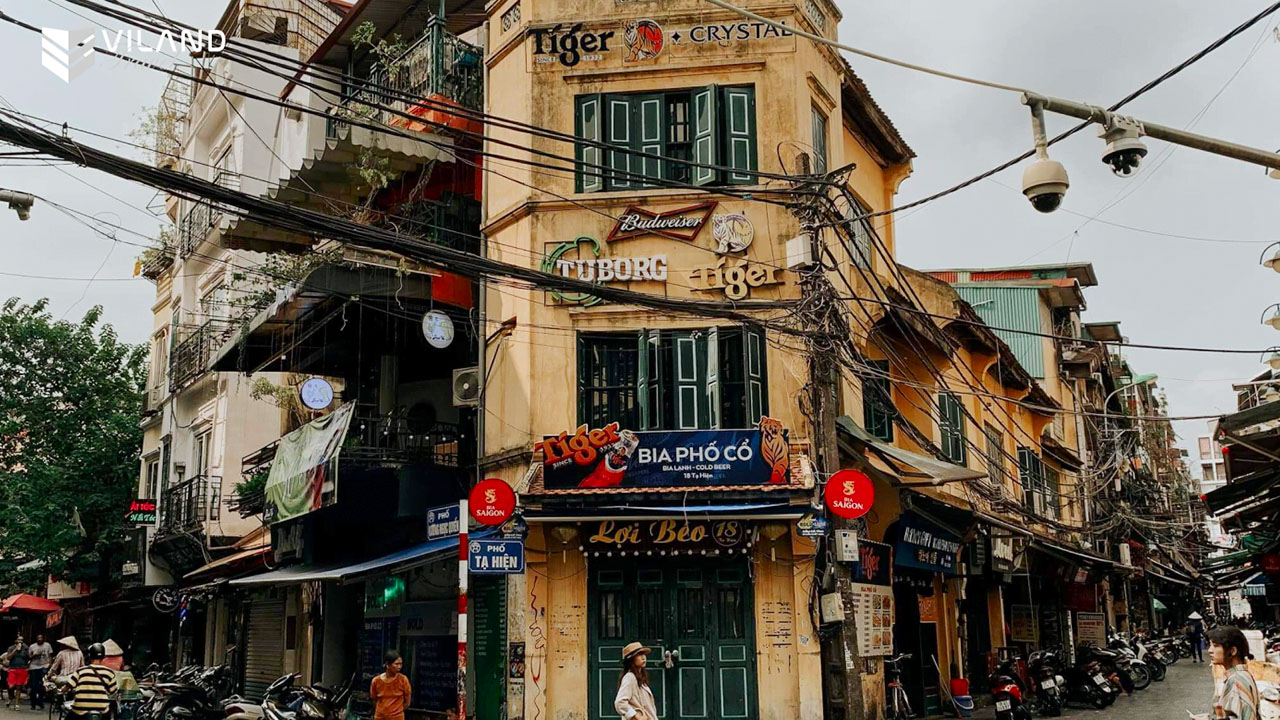
Key Features of Ta Hien Street
The architectural diversity and social dynamics of Ta Hien Street narrate the culturally vivacious tale of Hanoi. From the incandescent neon lights illuminating the streets at night to the aroma of local delicacies wafting through the air, Ta Hien offers an immersive experience into the essence of Hanoi. The street is a melting pot of cultural narratives and artistic expressions, illustrating its transformative journey from Rue Géraud to the bustling nightlife hub it is today.
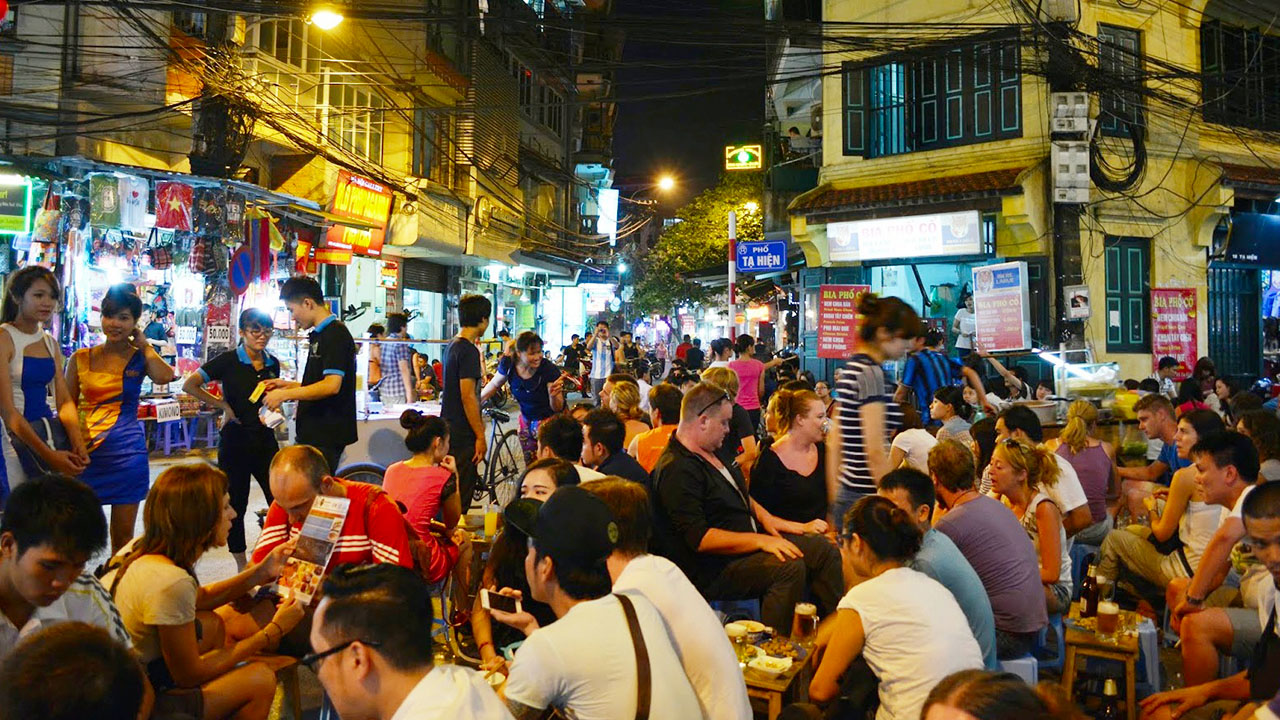
Architectural Styles: French vs. Vietnamese Influence
The architecture of Ta Hien Street uniquely blends French colonial with traditional Vietnamese styles. This fascinating architectural tapestry tells the story of a city shaped by history and the convergence of cultures. Walking down the street, one is immediately struck by the juxtaposition of architectural aesthetics and the functionality of buildings lining its path.
French Colonial Influence:
- Signature sloping roofs
- Ornate balconies and shuttered windows
- Cohesive two-story structures
Vietnamese Traditional Design:
- Compact, practical layouts
- Focus on ventilation and climate suitability
- Two-tier structures, with the first floor closer to the street
The odd-numbered houses on Ta Hien demonstrate the elegance of French design, offering a visual feast of sophistication and art, while the even-numbered homes reflect the sensibilities of Vietnamese architecture tailored to the tropical climate and the complexities of daily life. The blending of these elements presents a continuity of tradition and modernity, painting a tapestry rich in stories of resilience and adaptation.

Nightlife Atmosphere: Bia Hoi Junction
As night falls, Bia Hoi Junction situated at the intersection of Ta Hien and Luong Ngoc Quyen emerges as a microcosm of Hanoi’s flourishing nightlife culture. This area is famed for its vibrant atmosphere, imbued with the spirit of communal camaraderie and local tradition. People flock to this gastronomic hub, drawn by the allure of “bia hoi” the coveted local draft beer, light and unpasteurized.
The cacophony of laughter, clinking glasses, and harmonies of local street musicians echoes throughout Bia Hoi Junction, creating an irresistible energy. The neon lights color the environment with a playful hue, while tantalizing aromas of street food infuse the air, enticing passers-by to join the communal festivity.
Elements of Bia Hoi Junction:
- Bia Hoi Culture: Fresh, affordable draft beer
- Social Setting: Shared plastic stools, outdoor mingling
- Entertainment: Live music and street performances
This unpretentious and intimate setting fosters a welcoming environment, dissolving boundaries between locals and visitors. Here, friendships are forged over beer and laughter, illustrating Bia Hoi Junction’s role as a cultural cornerstone of Ta Hien’s social fabric.

Street Food Culture: Local Delicacies
Ta Hien Street’s culinary offerings are as diverse as they are delectable, drawing food enthusiasts from around the globe. Street food vendors line the streets, offering a sumptuous array of traditional Vietnamese dishes that tantalize the senses. From the crackle of grilled meats to the aromatic broth of Pho, the street embodies the essence of Hanoi’s rich culinary tapestry.
Must-try Local Delicacies:
- Banh Mi: Vietnamese sandwich with savory fillings
- Pho: Traditional noodle soup, celebrated for its aromatic herbs
- Nem Chua Ran: Fried fermented pork, known for its crisp texture
- Xien Nuong: Assorted grilled skewers with sumptuous meat
Each dish presents a slice of Vietnamese life, entwining tradition, flavor, and culinary finesse. Whether you’re a seasoned gourmand or new to Vietnamese cuisine, Ta Hien Street promises a culinary journey brimming with authentic tastes and vibrant interactions. This vibrant street food culture underscores the harmony and unity spanning Ta Hien Street and the deeply-rooted Vietnamese traditions it celebrates.
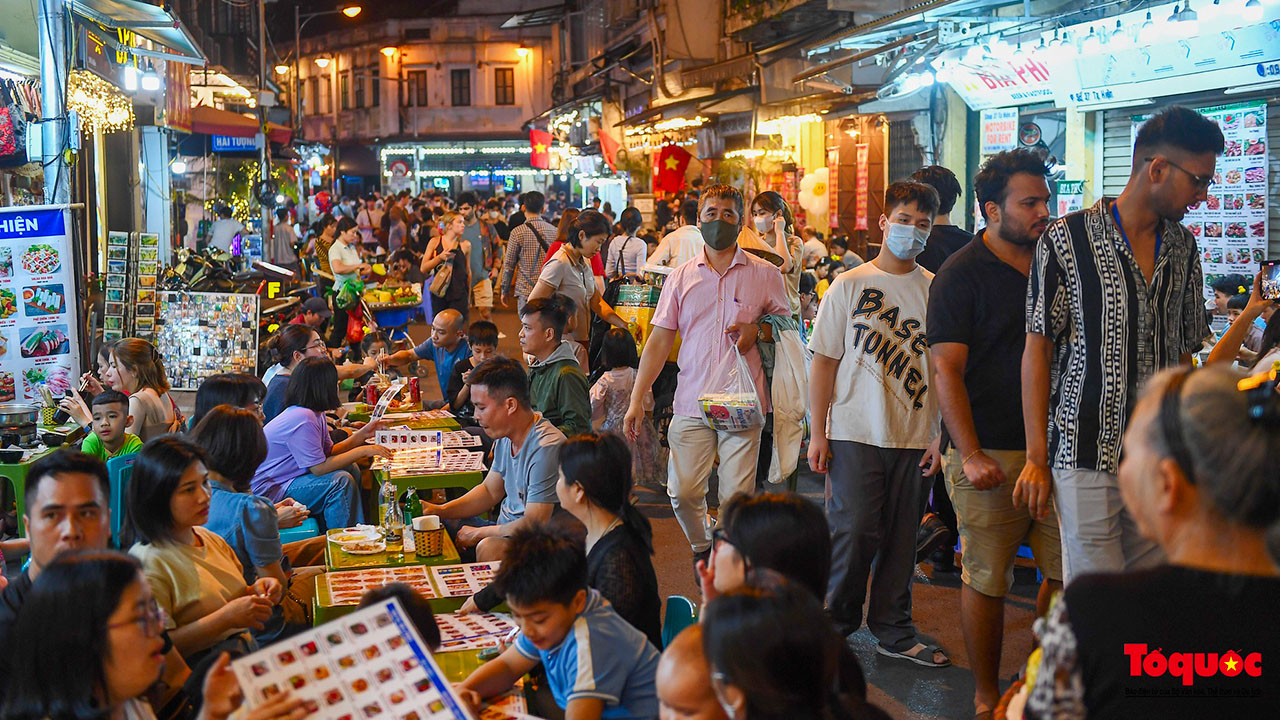
Popular Activities on Ta Hien Street
Ta Hien Street is a vortex of cultural and social engagement, offering vibrant activities that draw in locals and travelers alike. From an introductory stroll through its historical lanes to indulging in its famed nighttime attractions, visitors are guaranteed an unforgettable experience. The street’s lively atmosphere invites exploration through food, music, and drink, each promising a rich narrative woven into the lively tapestry of Hanoi’s life.
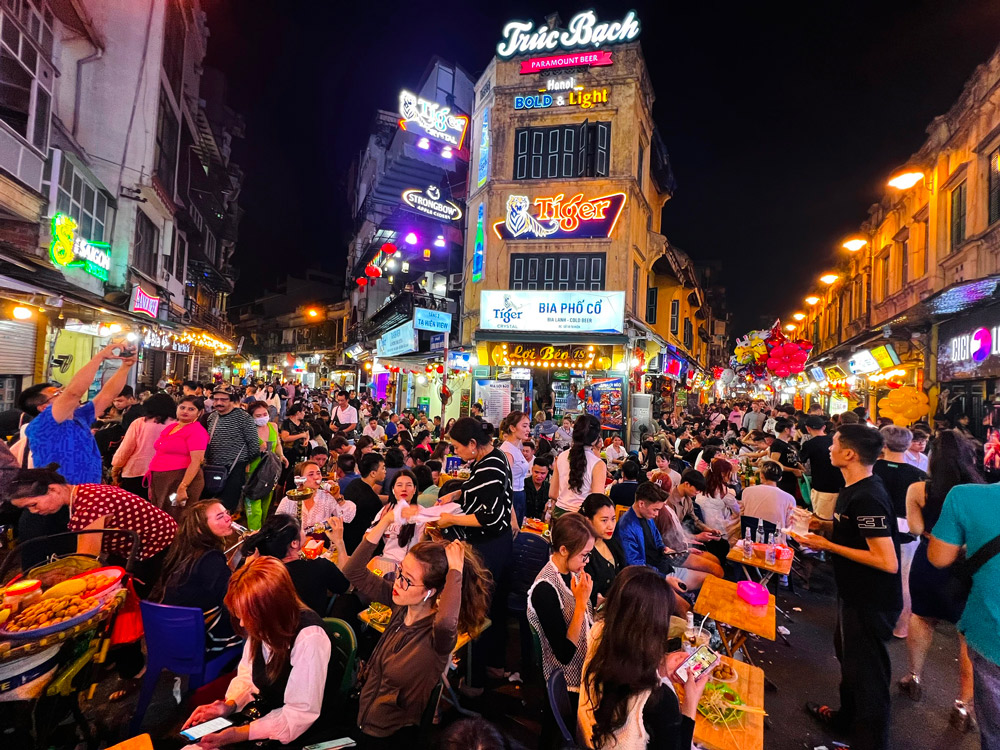
Enjoying Bia Hoi: The Fresh Draft Beer Experience
On Ta Hien Street, one quintessential activity stands out: tasting the famous bia hoi. This fresh draft beer, revered for its freshness and affordability, embodies the local spirit and the social camaraderie intrinsic to Hanoi. Served daily in modest stalls, “bia hoi” offers more than a drink it’s an authentic experience.
Visitors partake in this tradition by pulling up a small plastic stool on the street, mingling with fellow patrons. The convivial setting is further amplified by jovial laughter and the choral cheers, reminiscent of fleeting moments of shared joy. Here, imbibing “bia hoi” transcends the ordinary, serving as a social glue that unifies locals and visitors.
- Price: VND 5,000 – VND 8,000 per glass
- Setting: Streetside seating, communal tables
- Flavors: Light, crisp, refreshing
With each sip, patrons taste more than beer they taste tradition, resilience, and the tapestry of shared humanity. Bia hoi is more than a beverage it’s a narrative of Hanoi’s vibrant street life distilled into a glass.
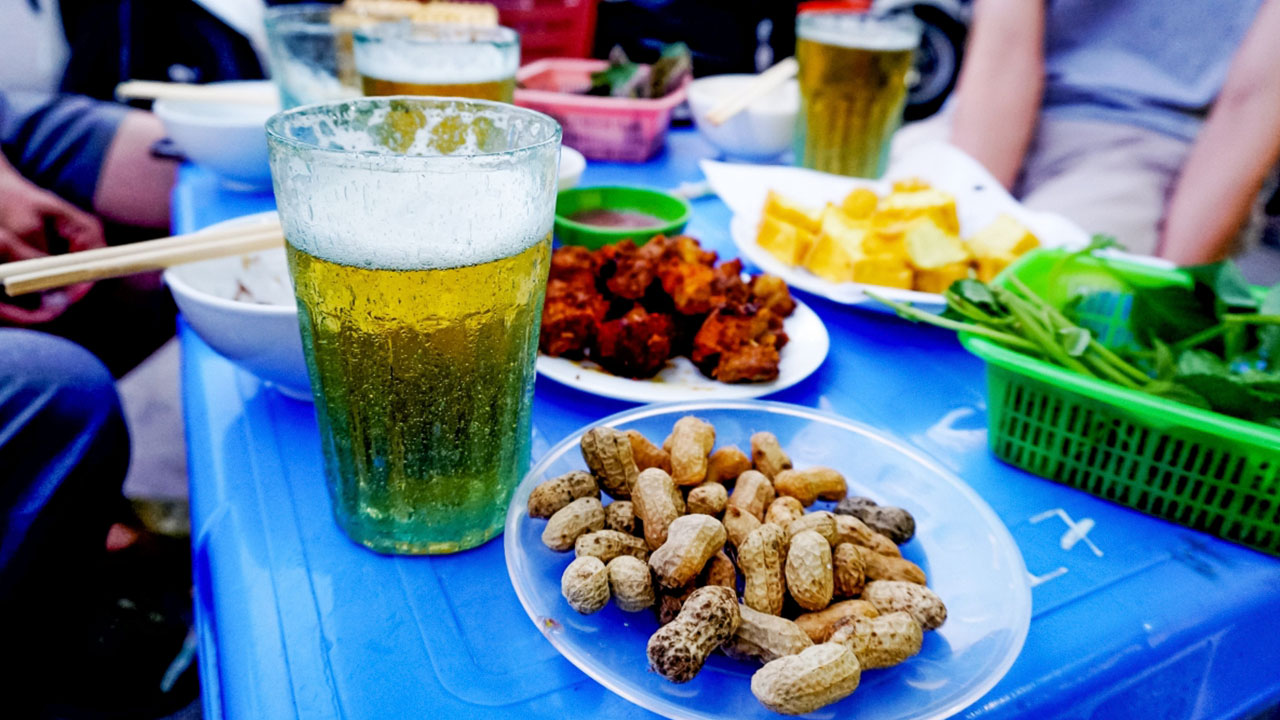
Sampling Local Street Food: Must-Try Dishes
Sampling the street food on Ta Hien is an epicurean adventure, appealing to both seasoned foodies and adventurous newcomers. Vendors offer a tactile journey through Hanoi’s palate, showcasing iconic dishes and unique flavors that entangle senses in an intricate dance of taste and tradition.
Street Food Gems:
- Banh Mi: A fragrant medley of meats, vegetables, and spices on a baguette
- Pho: Aromatic noodle soup with layers of broth, herbs, and tender protein
- Nem Chua Ran: Fried pork with a delightful crunch and subtle tang
These dishes, effortlessly marrying technique and culture, reflect the culinary legacies of Vietnam. The vibrant street market presents an evolving canvas of flavor, where each stall is a new chapter in Hanoi’s culinary anthology.
Tourists take in the bustling scene, navigating between flavors while conversing with vendors, gaining insights into the cultural significance of each dish. This culinary panorama showcases Ta Hien as a dense, flavorful hub where the vibrancy of Hanoi is tasted in every bite.

Partaking in Live Music Events: Bar Scene Highlights
As twilight settles over Ta Hien, the street’s pulsing heart the bar scene comes alive with the enchantment of live music. Against the acoustic backdrop of enthralling local and international melodies, guests experience the soul of Hanoi’s vibrant nightlife. Bars like Bia Hoi Corner and Hanoi Rocks Bar offer eclectic performances, creating an inviting atmosphere where visitors and locals coexist harmoniously.
Live Music Features:
- Genres: Local folk, international rhythms
- Venues: Cozy settings, intimate performances
- Vibe: Energetic and immersive
The live music events reenact the streets’ rich history and cultural evolution, weaving vibrant rhythms through its lively tapestry. This enriching mosaic invites all to join in the dance of life, where music narrates stories untold. Witnessing a performance becomes more than entertainment it’s an immersion into Hanoi’s spirited cultural heritage.
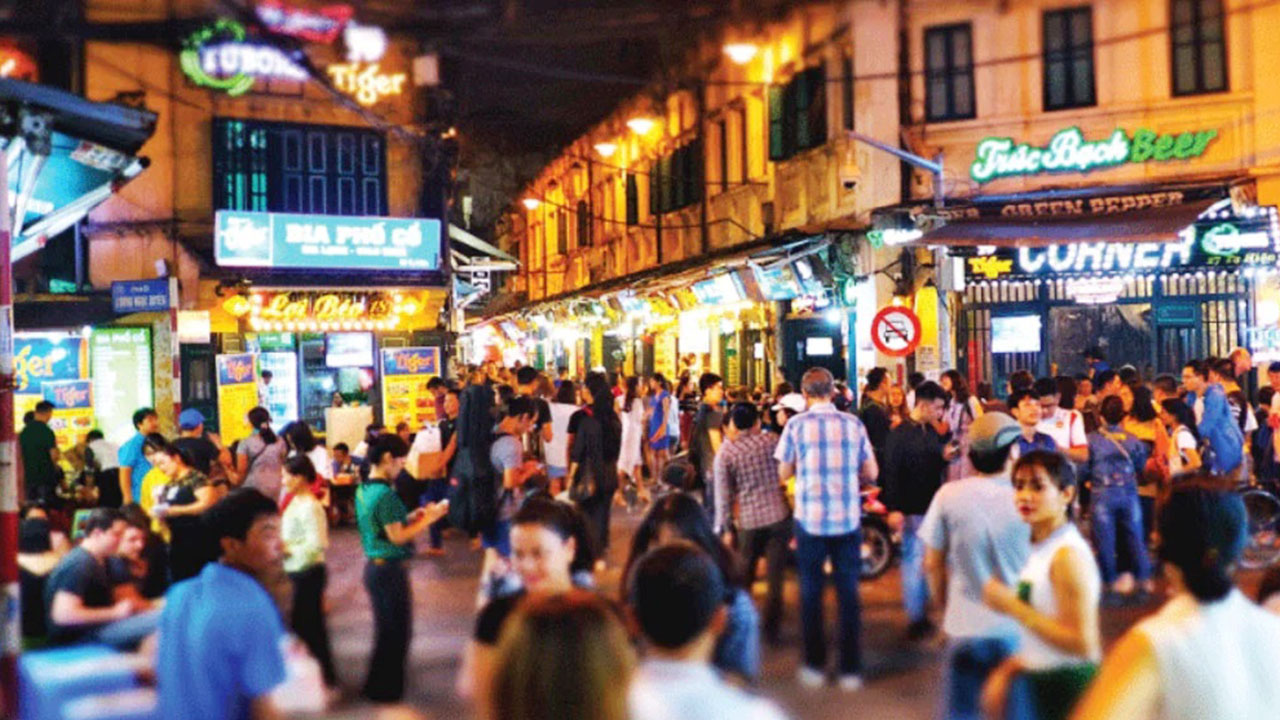
Navigating Ta Hien Street
Navigating Ta Hien Street can be as exhilarating as it is enriching. From the infectious vibrancy of “bia hoi” to live music enchantments, this lively lane offers a window into Hanoi’s dynamic soul. Visitors enjoy an array of local experiences, guided through labyrinthine streets by the eclectic energy that underscores Ta Hien’s multifaceted allure.

Best Times to Visit: Peak Hours and Recommendations
Timing your visit to Ta Hien Street is crucial for making the most of its unrivaled spirit. Evenings from 9 PM to 1 AM are peak times when the street is at its liveliest. During these hours, Ta Hien transforms into a kaleidoscope of colors, sounds, and aromas, bustling with crowds eager to enjoy the nightlife.
Evenings reserve the best of Ta Hien’s energy, where laughter blends with clinking glasses and aromatic infusions of street food delight the senses. Though it can be crowded, embracing the vitality during these hours enables a fuller, richer experience of Ta Hien’s unique charm.
Recommendations:
- Visiting Hours: 9:00 PM – 1:00 AM for peak atmosphere
- Activity Highlights: Street performances, food tastings, local interactions
- Crowd Management: Be cautious of traffic, navigate lightly
The key to navigating Ta Hien lies in immersing oneself in its communal fabric, nurturing curiosity, and being guided by the street’s infectious energy and inclusivity. Prepare to embrace its lively spirit and enter with vibrant anticipation.

Transportation Options: Getting to Ta Hien
Reaching Ta Hien is a simple endeavor, aided by a plethora of transportation options designed to cater to the diverse needs of travelers. Whether walking through the Old Quarter or opting for taxis and motorbike services, each journey unfolds amidst Hanoi’s vibrant cityscapes.
Transport Choices:
- Walking: Ideal for nearby city center locations; soak in the local atmosphere
- Motorbike Taxis (Xe Om): Quick, convenient for navigating Hanoi’s hustle
- Taxis: Reputable companies like Mai Linh ensure fair metered fares
For the adventurous, the double-decker bus service offers an engaging alternative, presenting a blend of travel comfort and insightful city views, complete with multilingual guides for an educational jaunt.
Public buses, while available, struggle with tourist demographic and offer less convenience amidst Ta Hien’s lively lanes. Therefore, traveler discretion and destination familiarity enhance the choice of transport, guiding visitors through Hanoi’s winding streets with assured ease.

Tips for First-Time Visitors: What to Expect
For first-time visitors, Ta Hien can appear as an intriguing organism of vibrancy and fast-paced social whirl. Its energy flows through every street-corner peddler, each stool-side conversation, inviting exploration without expectation.
Tips for Newcomers:
- Exploration Mindset: Embrace spontaneity, be open to unexpected encounters.
- Crowded Charm: Ta Hien thrives amidst friendly chaos; navigate consciously.
- Local Interactions: Engage with locals; learn cultural nuances through shared stories.
Expect a mosaic of sensory experiences: from the tantalizing burst of street flavors to the mesmerizing harmonies of live local music. In each moment, there is a story woven through the loud colors, infectious sounds, and delicate aromas transporting you through time and culture.
Approaching Ta Hien with an open heart and curiosity allows one to truly meet Hanoi, embracing its narratives and connections etched into every stone. Navigate these lanes with a spirit of discovery and readiness to engage in the stories waiting for you.
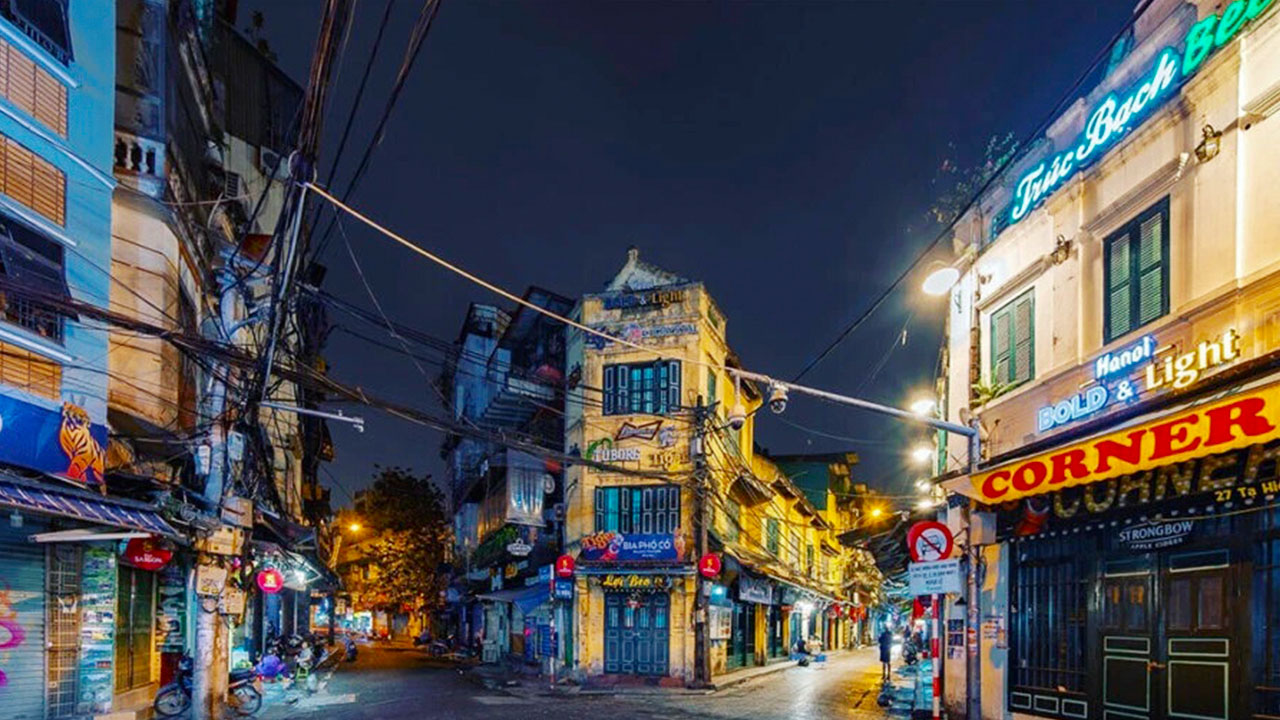
Nearby Attractions to Explore
Beyond the captivating allure of Ta Hien, nearby attractions await exploration, filling one’s journey with cultural richness. This juxtaposition of history pulls visitors from the energetic tempo of the street’s nightlife to the serene historical landmarks and bustling market scenes, offering a balanced experience of Hanoi’s diverse charms.

Hoan Kiem Lake: A Scenic Landmark
A mere stroll from Ta Hien, Hoan Kiem Lake, affectionately known as Sword Lake, offers a tranquil escape amidst Hanoi’s urban clamor. Encircled by verdant gardens and bustling pathways, the lake presents not just vistas but an allegory of Hanoi’s cyclic life stories retold through generations.
Attractions at Hoan Kiem:
- Ngoc Son Temple: Resting elegantly upon an emerald island, accessible via the iconic Huc Bridge, it encompasses the essence of Vietnam’s spiritual narratives and national heritage.
- Turtle Tower (Thap Rua): A solitary emblem rising amidst the lake; its panoramic allure captures vibrant sunsets, casting fiery reflections against rippling waters.
The lake offers more than its scenic beauty; it invites reflection under the emerald canopy of trees, facilitating a spiritual connection with age-old Hanoian tales interwoven seamlessly within the city’s evolving modernity.
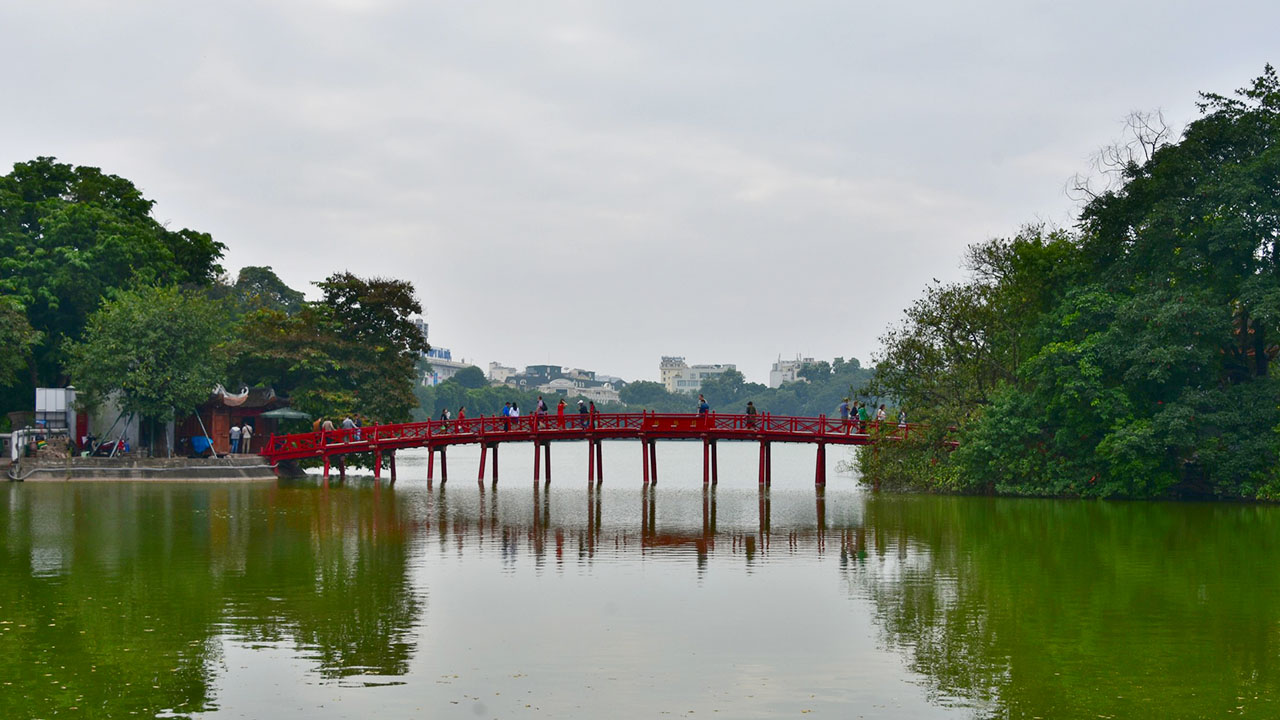
Cultural Sites: Ma May Ancient House and Bach Ma Temple
A small enclave in proximity to Ta Hien leads to captivating cultural sites like Ma May Ancient House and Bach Ma Temple. These sites offer an insight into Hanoi’s architectural evolution and spiritual dimensions, presenting narratives from bygone eras with contemporary relevance.
Ma May Ancient House:
- Era: Constructed in the late 19th century
- Donors: Empirically restored, preserving Nguyen dynasty aesthetics
- Design: Five distinct sections demonstrating historical Vietnamese life
Bach Ma Temple:
- Legend: Attributes its existence to a white horse guiding the Hanoi emperor
- Purpose: Reflects ancient spirituality, providing a serene ecclesiastical ambiance
- Cultural Engage: Engulfing visitors in Vietnam’s rich spiritual and religious tapestry
Together, these cultural wonders embellish the significance of Hanoi’s historical layers where tangible tapestries unravel sacred storylines anew.
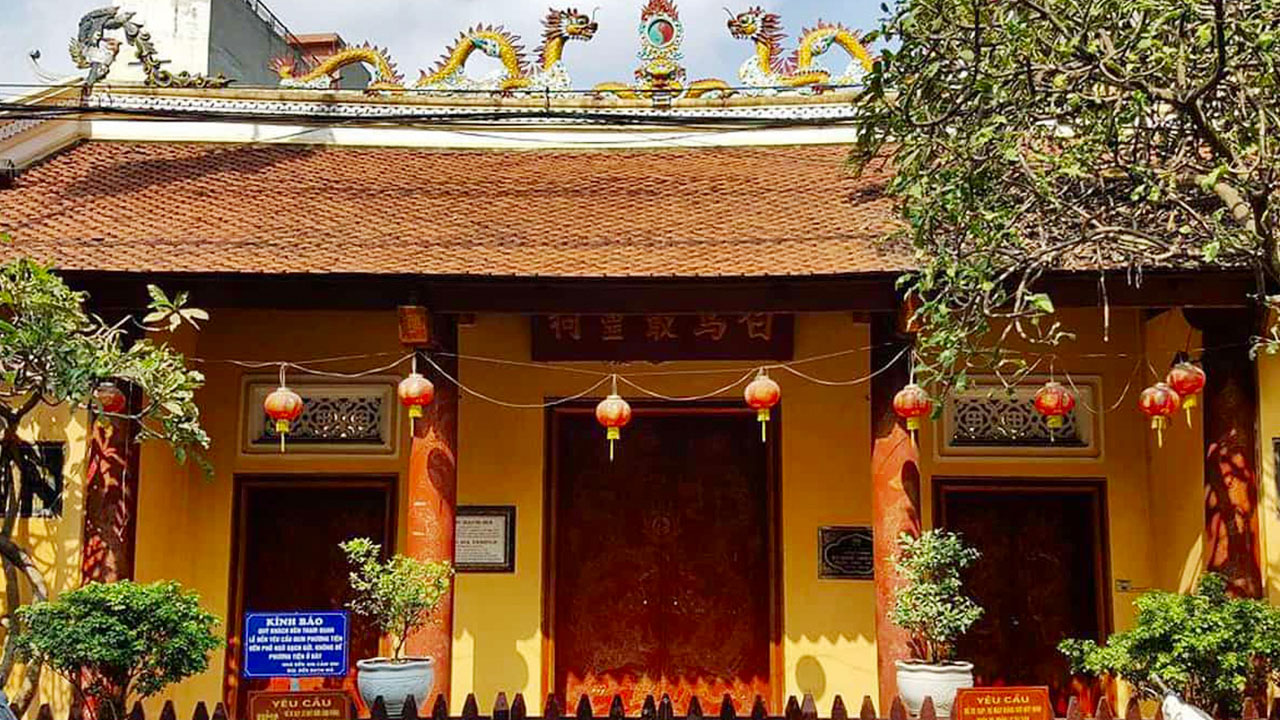
Local Markets: The Old Quarter Night Market Experience
The Old Quarter Night Market unfolds mere steps from Ta Hien, enveloping visitors in an irresistible cascade of aromas, colors, and vibrant interactions. As the market ignites after dusk on weekends, the lively stalls metamorphose into a feast for the senses.
Market Highlights:
- Stalls: Artisanal crafts, local delicacies, souvenirs
- Cultural Expression: Street performances weaving energy into the aisles
- Vibe: Bustling yet community-centered
Here, dive headfirst into the kaleidoscope of commodities and culinary charms, traversing through melodious anecdotes from traders eager to narrate unbounded tales with soul-stirring culinary inflections.
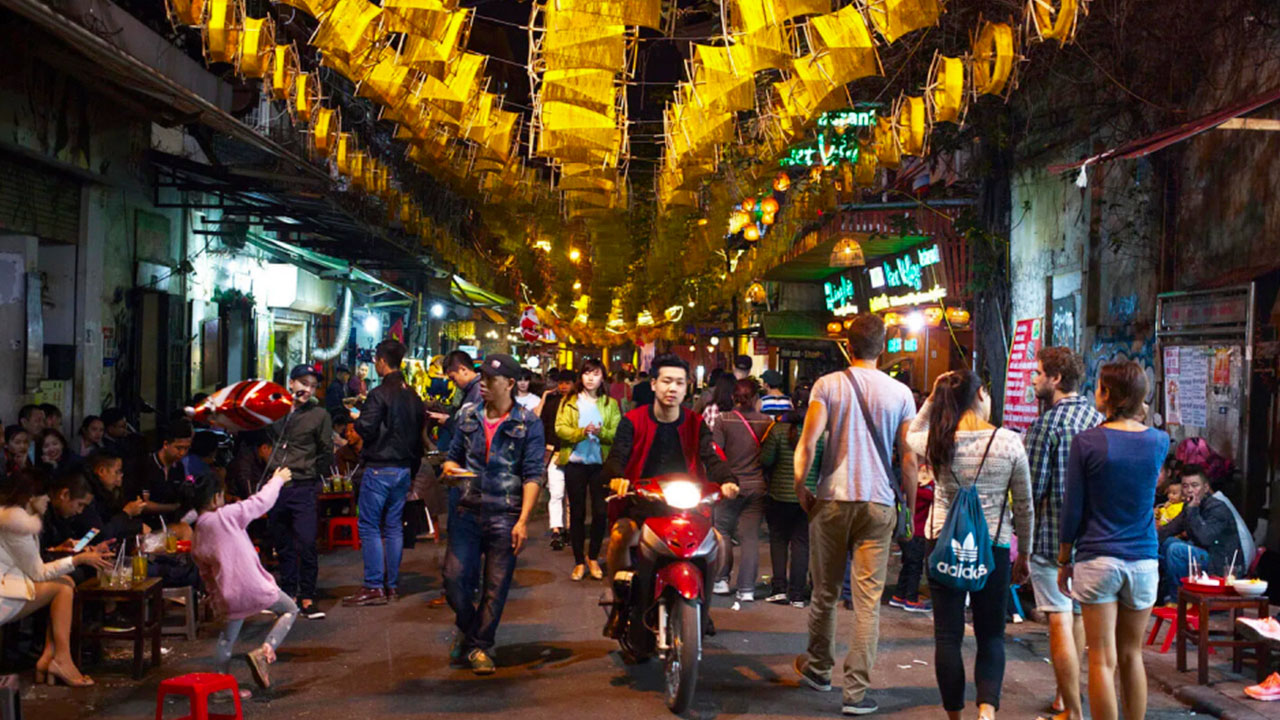
Comparison of Ta Hien Street with Other Nightlife Areas in Hanoi
As Ta Hien collaborates with nearby attractions to craft a multifaceted exploration of Hanoi, its distinct reputation within Hanoi’s broader nightlife spectrum emerges. It offers a unique slice of cultural engagement and social vibrancy, rendering it unmistakably iconic within the city’s rich narrative of night scenes.
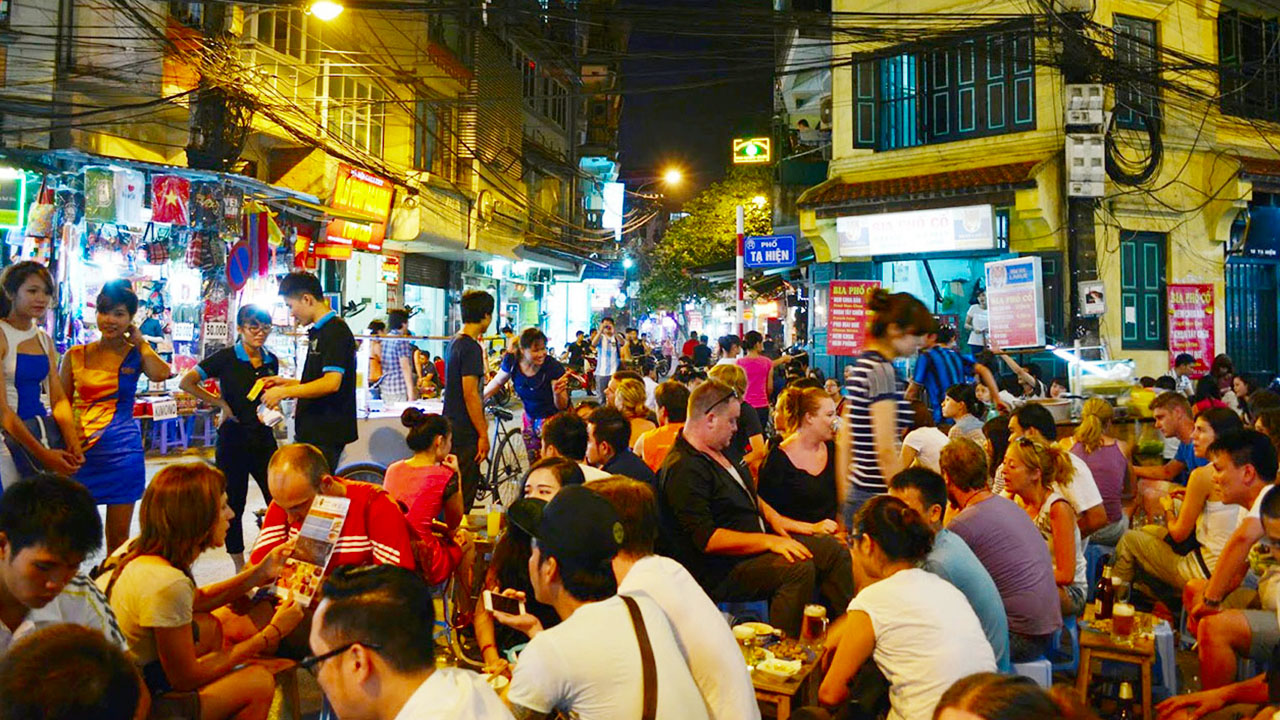
Differences Between Ta Hien Street and Hang Buom Street
Within Hanoi’s Old Quarter, Ta Hien and Hang Buom beckon differently to those seeking distinct nocturnal sketches. While both indulge nighttime fantasies, each projects unique thematic experiences across their individual paths.
Ta Hien Street:
- Focus: Frenetic beer culture and local street food
- Crowd: Youthful, vibrant social interactions
- Atmosphere: Casual, street-side seating
Hang Buom Street:
- Focus: Culinary exploration and conversational ambiance
- Crowd: Diverse, including families and seekers of quieter revelries
- Atmosphere: Slightly upscale, reserved lining
Thus, while Ta Hien captivates with an echoing merriment crafted through clinking glasses and street sounds, Hang Buom resonates as a gathering rich with culinary whispers, offering a quieter reverberation across the canvass of Hanoi’s night time.

Similarities with Beer Street in Other Vietnamese Cities
Although unique to its spirit and location, Ta Hien Street mirrors similarities with beer streets in other Vietnamese cities like Ho Chi Minh’s Bui Vien or Da Nang’s An Thuong. Here, the notion of communal “bia hoi” indulgence transcends geographical boundaries.
Hanoi Ta Hien:
- Character: Historical charm, communal settings
- Ambience: Cultural vibrancy, intimate gatherings
- Activities: Music-driven, culinary experiences
Ho Chi Minh (Bui Vien) and Da Nang (An Thuong) Parallels:
- Character: Modern tone entwined with touristic allure
- Ambience: Enclosed high-octane spectrums
- Activities: Bar-induced revelries catering to diversity
These beer street experiences coalesce over cans and conversations, echoing the multi-layered richness of Vietnamese communion though variably distinct in immersive journeys.

Unique Aspects of Ta Hien Street’s Atmosphere
The allure of Ta Hien Street extends beyond conventional metrics of nightlife, delineating a tapestry woven with unique aspects punctuating its eclectic appeal. Its character emerges through smartly juxtaposed elements reflecting Hanoi’s cultural nuances.
Halos of neon paint flowing architectures, while a medley of aroma ushers crowds through vibrant alleyways. Within this ocean of sensory effervescence, the spatial-communal dichotomy frames intimate embraces, enabling interactions where music fuses into the pulse.
Features Defining Ta Hien:
- Scenic Vibe: Symbiosis of historic and contemporary tones
- Eco-System: Vibrant confluence between music, culinary arts, and cultural tapestries
- Social Fabric: A poignant narrative threading Hanoi’s past and present
In conclusion, Ta Hien Street emerges as an enduring narrative of Hanoi, binding tradition and modernity. Visitors navigate synchronized tapestries offbeat yet boundless, lured into this once colonial treasure now each story leads onward.
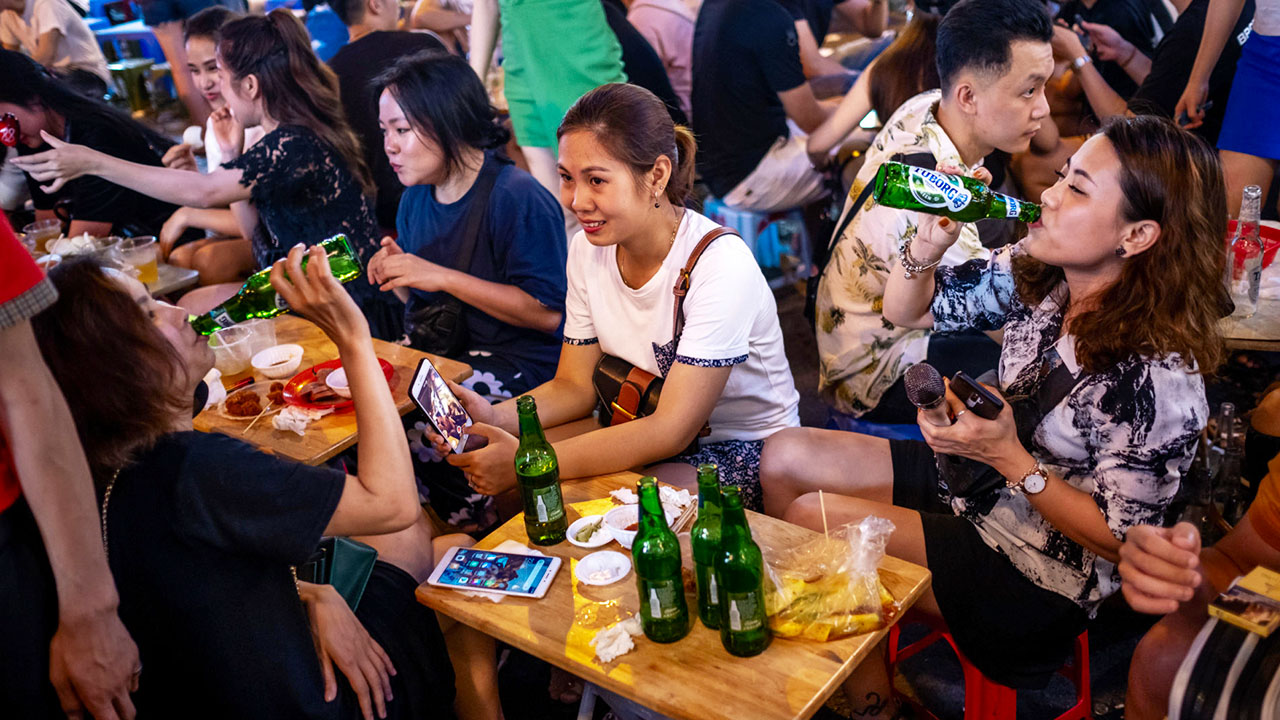
FAQs
- What is Ta Hien Street renowned for?
Ta Hien Street is famed for its vibrant nightlife, bustling Bia Hoi culture, and rich architectural blend of French colonial and Vietnamese styles. - When is the best time to experience Ta Hien Street?
The street is most lively from 9:00 PM to 1:00 AM when the vibrant nightlife thrives, offering diverse experiences in music and cuisine. - What are the must-try dishes on Ta Hien Street?
Don’t miss trying Banh Mi, Pho, Nem Chua Ran, and Xien Nuong each brimming with authentic local flavors. - How can I reach Ta Hien Street from Hoan Kiem Lake?
Ta Hien is within a 5-10 minute walk from Hoan Kiem Lake, or accessible via motorbike taxis and standard taxis. - Is Ta Hien Street different from other nightlife spots in Hanoi?
Yes, Ta Hien is distinct for its historical charm and casual ambiance integrating culture, beer, and street festivities.
Key Takeaways
- Ta Hien Street represents the cultural essence of Hanoi, showcasing an intricate confluence of history, social life, and nightlife.
- Positioned in Hanoi’s Old Quarter, it bridges cultural narratives from colonial eras to contemporary vibrancy through its venues and activities.
- The street captivates with a unique blend of communal Bia Hoi experiences, street food delight, and rich architectural contrasts.
- It offers various attractions, from live music venues to local delicacies, crafting an unmatched Hanoi exploration.
Conclusion
Ta Hien Street stands as both a historical testament and a contemporary playground in Hanoi, drawing in locals and travelers with its unique blend of culture, gastronomy, and nightlife. From its roots as Rue Géraud, reflecting a French colonial past, to its current status as the “Beer Street,” the evolution of Ta Hien illustrates both the resilience and vibrancy of Hanoi’s spirit.
It has transformed into a hub where history is celebrated and new memories are forged, mixing the old-world allure of its architecture with the modern-day allure of its bustling street life. As a visitor, engaging with Ta Hien Street provides an unparalleled opportunity to dive into the heart of Hanoi’s rich tapestry, leaving with memories as vivid and lasting as the stories that have shaped this iconic street.


